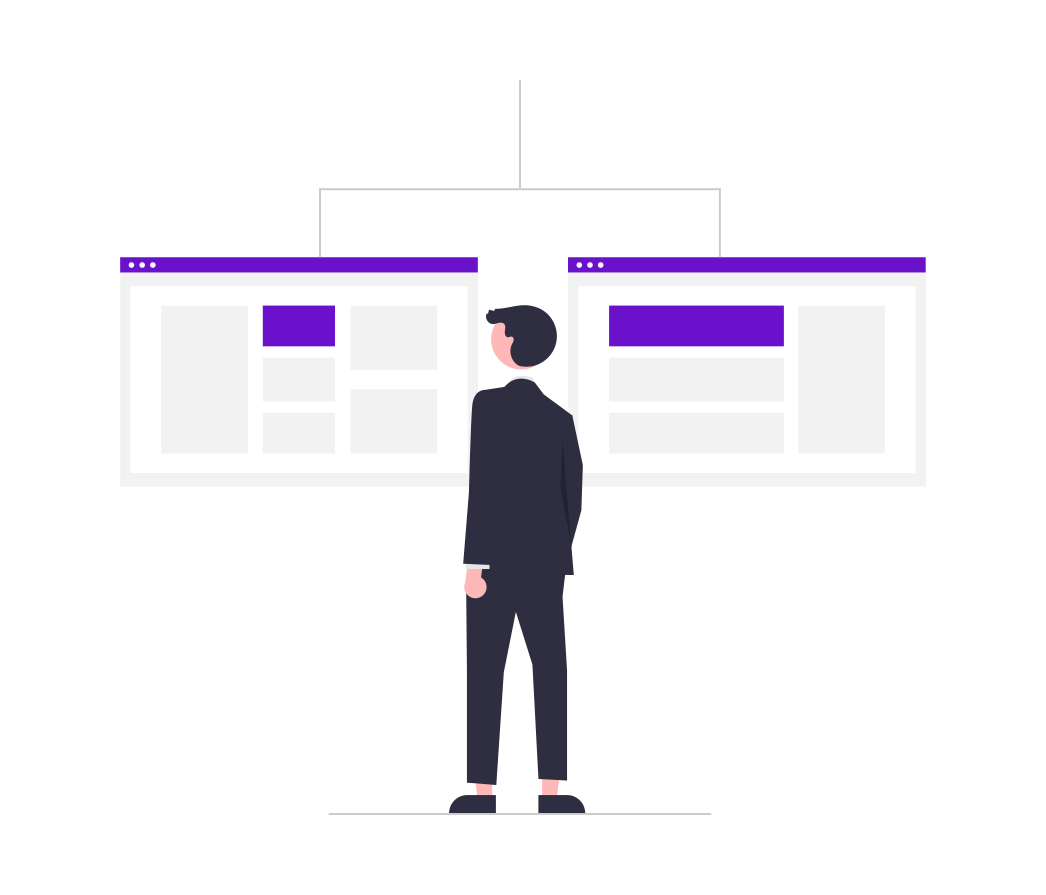De-anonymizing website visitors is a crucial tactic in modern digital marketing. Whether you operate in a B2B or B2C environment, understanding who is visiting your website allows you to personalize the experience, engage visitors more effectively, and ultimately drive higher conversion rates. However, the strategies for de-anonymizing visitors can differ significantly between B2B and B2C settings. This blog explores the nuances of these strategies and offers insights into optimizing your approach for each audience type.
Understanding De-anonymization
Before diving into the specifics of B2B and B2C strategies, it's important to define what de-anonymization means in the context of digital marketing. De-anonymization refers to the process of identifying anonymous website visitors by uncovering data such as their company, role, geographic location, or behavioral patterns. This is often achieved through a combination of IP address tracking, cookies, user behavior analysis, and integration with external databases.
De-anonymizing for B2B Audiences
In a B2B context, the primary goal of de-anonymizing visitors is to identify the companies and specific decision-makers who might be interested in your products or services. Here are key strategies for effectively de-anonymizing B2B website visitors:
1. IP Address Matching and Company Identification
One of the most common techniques in B2B de-anonymization is matching visitors' IP addresses to known company IP ranges. Many B2B companies use specialized tools that can identify the organization associated with a visitor's IP address. This technique is particularly effective when targeting larger enterprises that have static IP addresses.
2. Leveraging LinkedIn and Other Professional Networks
Professional networks like LinkedIn are gold mines for B2B marketers. By integrating your website analytics with LinkedIn Insights or other professional platforms, you can identify visitors based on their LinkedIn profiles. This allows you to understand their professional background, current role, and even their interest in specific topics or industry trends, enabling more precise targeting.
3. Engagement-Based Segmentation
Tracking the behavior of visitors on your website—such as pages visited, content downloaded, or time spent on certain pages—can provide valuable clues about their intent. For example, if a visitor spends a significant amount of time on your pricing page or returns to read several blog posts on a related topic, they might be considered a high-intent lead. Advanced analytics platforms can use this data to score leads and prioritize them for outreach.
4. CRM and Marketing Automation Integration
Integrating your website analytics with Customer Relationship Management (CRM) systems and marketing automation tools allows you to create a seamless flow of information. When a visitor’s identity is partially known (e.g., they have filled out a form or attended a webinar in the past), these systems can cross-reference that data and provide a more complete profile, including their engagement history and the likelihood of conversion.
De-anonymizing for B2C Audiences
In contrast, B2C de-anonymization focuses more on identifying individual consumer behaviors and preferences to provide a highly personalized experience. Here’s how de-anonymization differs in a B2C environment:
1. Cookie Tracking and Behavioral Analysis
Cookies are the cornerstone of visitor identification in the B2C world. These small pieces of data stored in a user’s browser help track their behavior across your site and even across multiple sites. By analyzing cookie data, you can understand a visitor's preferences, shopping habits, and interests. For example, if a visitor frequently browses products in a specific category, you can customize their website experience to showcase related products.
2. Personalization Engines and AI
Personalization engines powered by AI and machine learning can predict what a visitor might be interested in based on their past behavior. These engines can provide product recommendations, tailor content, or customize promotional offers in real time, increasing the likelihood of a conversion. This level of personalization is particularly important in B2C, where consumer preferences can vary widely and change rapidly.
3. Data Enrichment from Third-Party Sources
B2C marketers often use data enrichment techniques to fill in gaps in their understanding of a visitor's identity. This might involve partnering with third-party data providers to obtain demographic information, purchasing behavior, or lifestyle attributes. Such enriched data can help marketers build a comprehensive picture of their audience and personalize the experience accordingly.
4. Cross-Device Tracking
B2C consumers are known to use multiple devices throughout their purchasing journey. They might start browsing on a mobile device, research further on a tablet, and finally make a purchase on a desktop. Cross-device tracking is, therefore, essential in B2C de-anonymization. Techniques like deterministic and probabilistic matching help create a unified customer profile across all devices, ensuring a seamless and personalized user experience.
Key Differences in Strategy
The fundamental differences in de-anonymization strategies for B2B and B2C audiences boil down to the nature of the audience and their intent:
-
B2B Strategies focus on identifying businesses and key decision-makers. They rely heavily on company data, professional networks, and intent signals to build a picture of potential leads and tailor outreach strategies.
-
B2C Strategies prioritize individual consumer preferences and behaviors. They leverage data from cookies, third-party sources, and AI-powered personalization tools to deliver highly customized experiences to individual visitors.
Privacy Considerations and Compliance
Regardless of whether you're targeting B2B or B2C audiences, it is crucial to adhere to data privacy regulations such as GDPR, CCPA, and other regional privacy laws. Both strategies involve the collection and processing of personal data, which requires explicit consent from visitors and robust data protection measures. Marketers must also provide clear information about how data is being used and offer options for users to opt-out.
Conclusion
De-anonymizing visitors is a powerful technique for both B2B and B2C marketers, but it requires a nuanced approach tailored to the specific audience. By understanding the distinct strategies needed for each environment, marketers can enhance their targeting, improve engagement, and drive better business outcomes. As digital marketing continues to evolve, staying abreast of the latest tools and technologies will be key to maintaining a competitive edge in both the B2B and B2C spaces.


